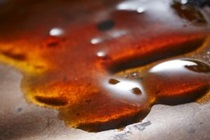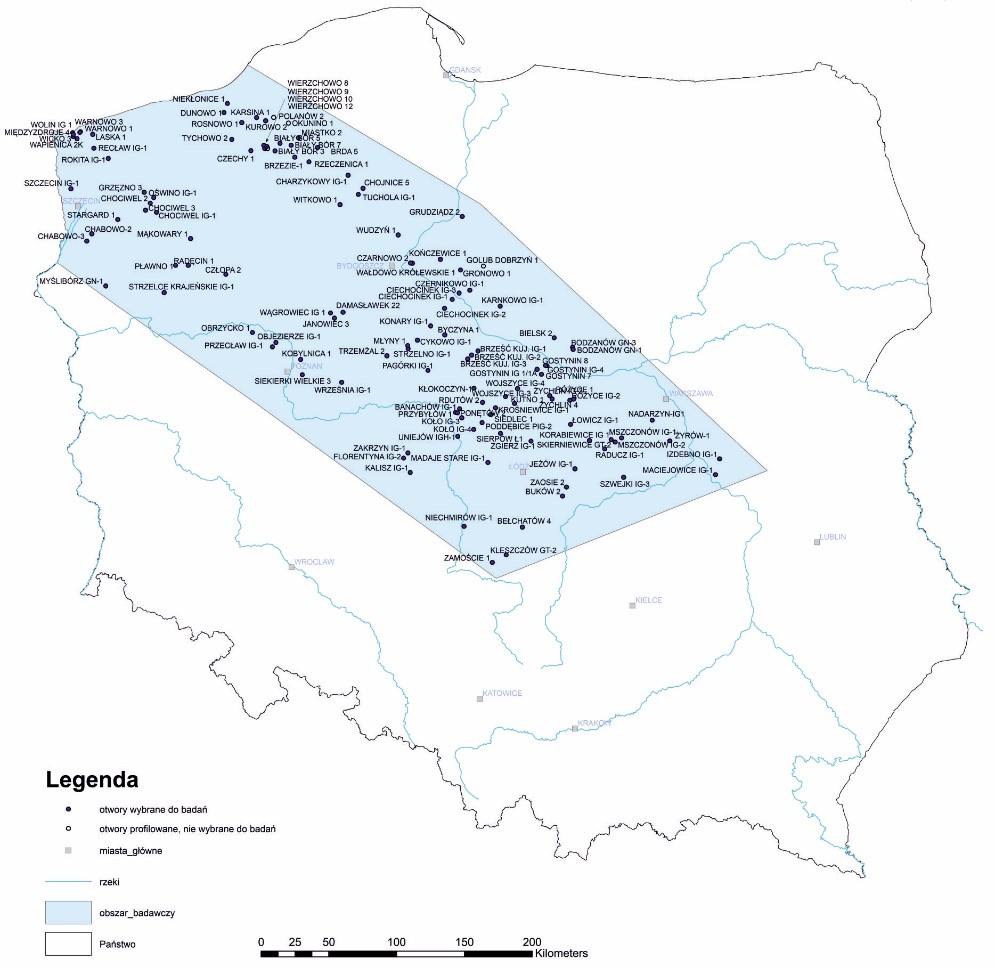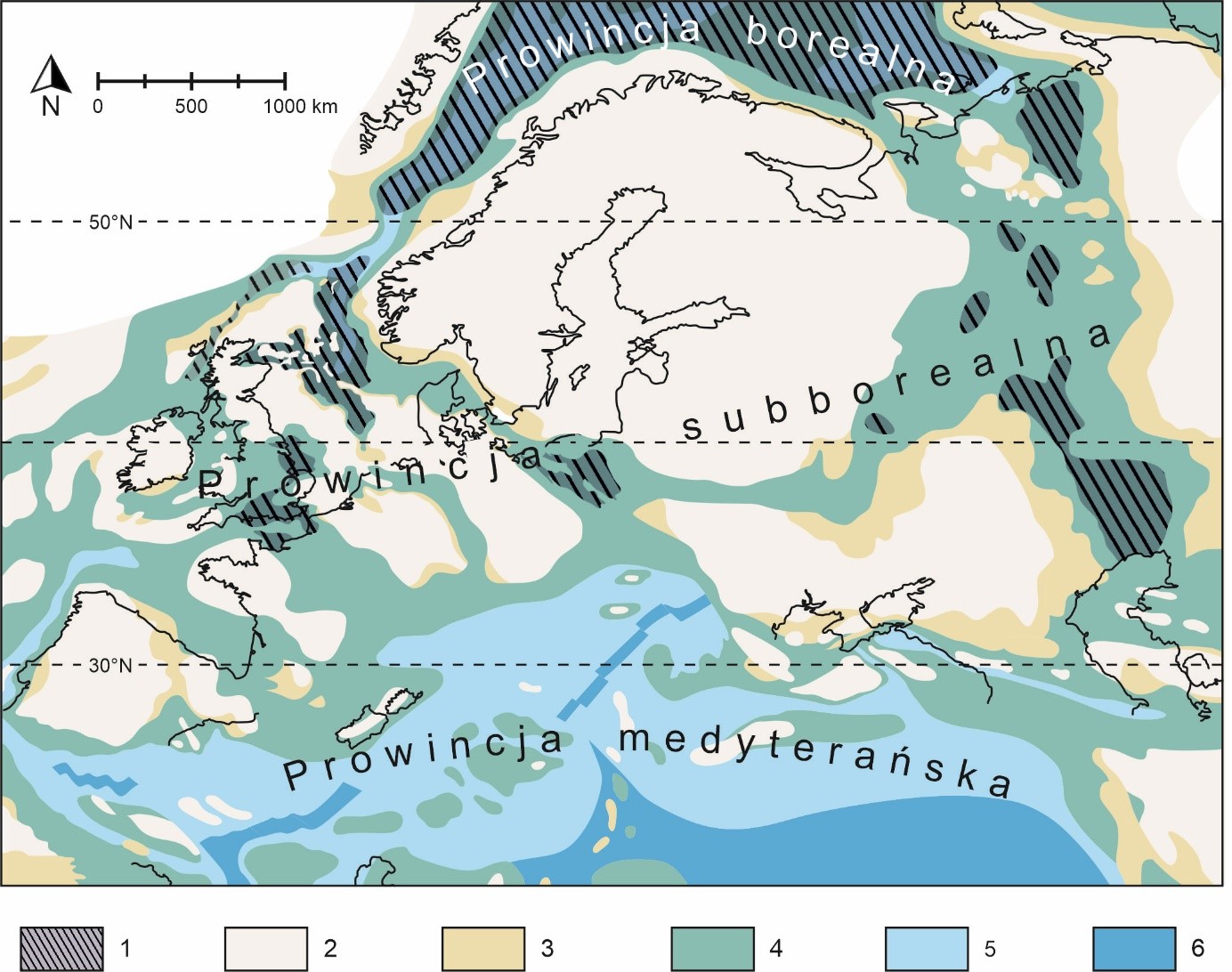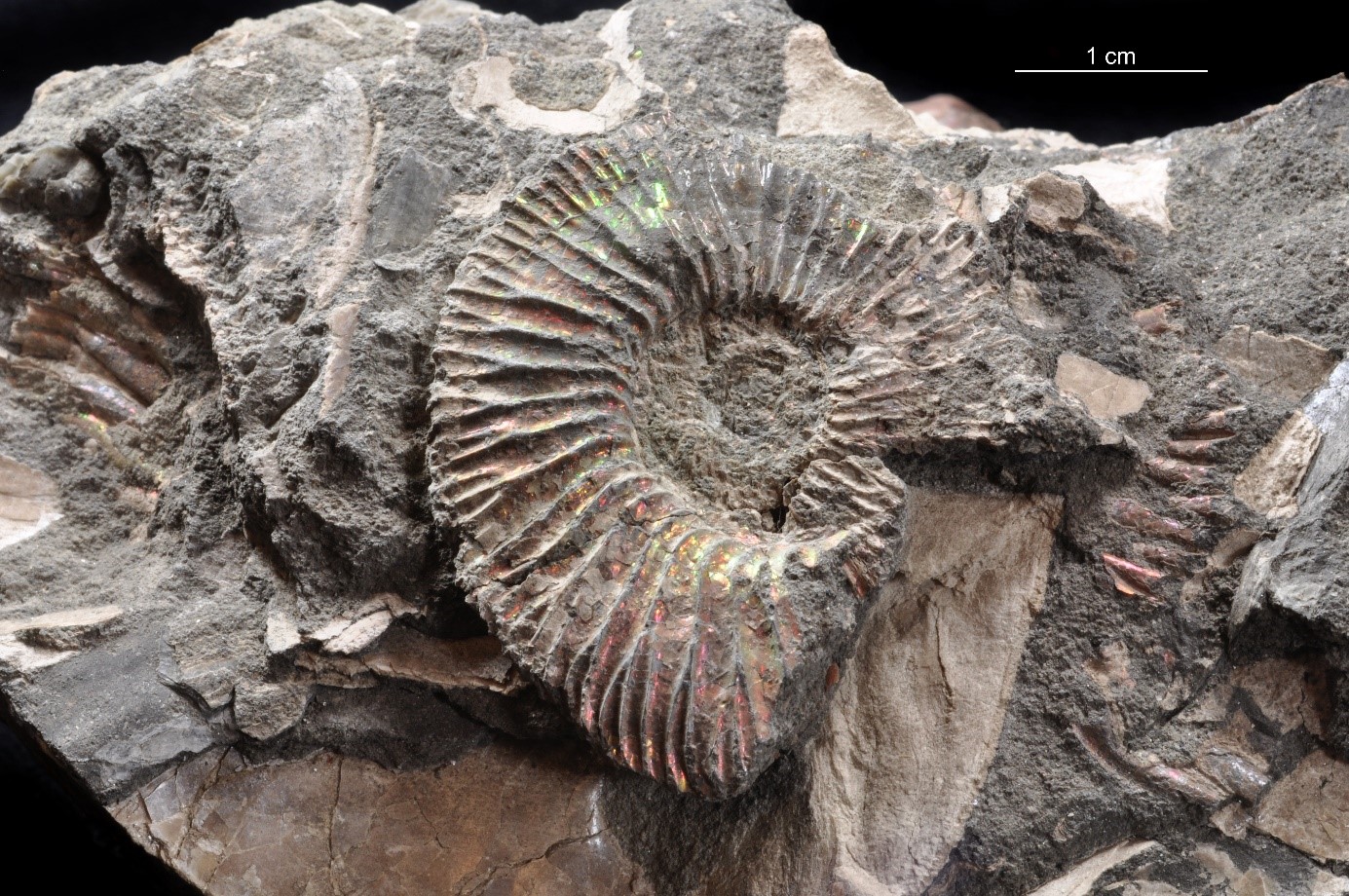
The Polish Geological Institute – NRI has completed a project devoted to the recognition of the potential of the Jurassic and Lower Cretaceous slates of extra-Carpathian Poland in terms of hydrocarbon generation for gas and oil deposits.
The project was implemented as part of the tasks of the State Geological Survey at PGI-NRI in the period from 1 July 2019 to 30 June 2023.
Scope of studies
The study area covered geological structures of the Polish Lowlands belonging to the Mid-Polish Anticlinorium and adjacent basins (Szczecin, Łódź, Pomeranian and Płock basins). The project was based on archival coreholes, as the studied rocks do not occur at the surface. The main objective of the project was to determine the possibility and extent of hydrocarbon generation (natural gas/oil) from fine-grained rocks (siltstones and claystones) of the Jurassic and Lower Cretaceous, often referred to as the so-called dark slates, which contain organic matter and are deeply buried, in a large part of the Polish Lowlands.
The project was important for both scientific and utilitarian reasons, due to a long-standing controversy over the possibility of generating hydrocarbons from Jurassic and Lower Cretaceous formations of the Polish Lowlands, which occur deep (up to about 3 km) below the surface. It should be noted that a number of previous works suggested the possibility of generation of hydrocarbons from deeply buried formations, mainly Jurassic, containing transformable organic matter, which could be a source rock for natural gas/oil deposits. However, this has never been precisely documented.
Course and Methodology of Studies
The studies comprised analysis of 10 Jurassic and Lower Cretaceous silt and clay complexes. The studies comprised sampling of 813 rock samples coming from 88 boreholes in core deposits of the State Treasury and PGNiG and use of numerous archival samples collected in PGI-NRI from 35 boreholes (Fig. 1). A number of petrographic, mineralogical, geochemical analyses and magnetic susceptibility of rocks were carried out to determine composition of the studied formations and their sedimentation environment. In addition, tests were performed on the content, type and maturity of organic matter and its origin and composition of organic fractions, tests on the physical properties of rock samples, including porosity and permeability, as well as geophysical surveys to determine the content of organic matter and the porosity and permeability of rocks in borehole profiles that were not fully cored.
Furthermore, modelling of the burial history of Jurassic and Lower Cretaceous formations, their degree of heating and transformation of organic matter, analysis of the deep geological structure, along selected lines of geophysical cross-sections through the study area were carried out. Maps of spatial distribution of organic matter content and maturity parameters were also prepared.

Fig. 1. Location map of the surveyed boreholes
Results
The results obtained indicate variable organic matter contents of the analysed Lower and Middle Jurassic lithological complexes, ranging from 0 to 17.0% by weight (average 2.3 by weight), its terrestrial or residual character (kerogen III and IV), low hydrocarbon potential, low degree of thermal maturity and low hydrocarbon generation capacity.
The studied Upper Jurassic lithological complex, included in the so-called Pałuki Formation, is characterised by increased hydrocarbon potential and the presence of mixed organic matter of marine and terrestrial origin (kerogen II and III), whose content varies from 0.1 to 10.7% by weight. (average 2.8% by weight). This matter is, however, immature in terms of hydrocarbon generation. The studied Lower Jurassic complexes are characterised by organic matter content ranging from 0 to 8.3% by weight (average 2.3 % by weight). The organic matter present there consists mainly of residual kerogen IV and is remarkably immature in terms of hydrocarbon generation.
Conclusions
The obtained comprehensive results of these studies, though negative from the point of view of petroleum geology, allowed to solve definitively the long discussed problem of possibility of hydrocarbon generation from Jurassic formations of the Polish Lowlands which are deeply buried under the surface. The immaturity of Jurassic and Lower Cretaceous organic matter of the Polish Lowlands should be associated with a relatively low thermal gradient in this area, occurring after the period of deposition of the studied formations until the present day.
It should be noted that this situation is different from the North Sea, Norwegian Sea and Barents Sea basins, where sedimentary heating associated with so-called “extinct rifts” and deep magmatic intrusions took place in the Mesozoic. Rich hydrocarbon deposits were formed there.
Interestingly, the Upper Jurassic Pałuki Formation of the Polish Lowlands, dated to the uppermost Jurassic, i.e. the Upper Cimmerian (Upper Kimmeridgian) and Lower Tithonian, is the direct age and lithological equivalent of the North Sea Basin Kimmeridge Clay Formation, which is considered to be the main source of hydrocarbons found in this area. Both formations belong to the Upper Jurassic lithological facies of organic matter-rich slates, which were widely distributed across the northern, north-western and north-eastern parts of Europe (Fig. 2).

Fig. 2. Zones of deposition of dark slates against the palaeogeography of Early Tithonian (Late Jurassic) Europe: 1 – areas of deposition of dark slates rich in organic matter, 2 – elevated land, 3 – coastal sediments, 4 – shallow marine basins, 5 – deep marine basins, 6 – deep ocean basins
Due to numerous and well-preserved ammonite fauna (Fig. 3) occurring in the formations of the Pałuki Formation its precise biostratigraphic dating became possible. These made it possible to conclude that the organic matter-enriched horizons of the Pałuki Formation correlate precisely with the age-matched, organic matter-enriched horizons of the Kimmeridge Clay Formation, which have been described in south-west and north-east England.
This demonstrates the simultaneity of the palaeoenvironmental phenomena that were responsible for the formation of Late Jurassic dark slates, rich in marine organic matter, not only in north-western but also in central Europe. These phenomena were associated with a significant inflow of organic matter into partially isolated Late Jurassic marine basins and the hypoxia of their bottom waters.
They should be associated with periodically increased humidity of the climate, probably of monsoon character, which was controlled by orbital changes (so-called ‘Milanković cycles’). The proven synchronicity of the occurrence of the Upper Jurassic dark slates in Poland and north-western Europe and features of their depositional environment documented on the basis of geochemical analyses are an important argument in the discussion on the genesis of the above mentioned sediments.
Completion and further plans
The project allowed to unequivocally settle the long discussed issue of generative potential of the Jurassic and Lower Cretaceous slates of the Polish Lowlands.

Fig. 3. Well-preserved ammonites from the northern Virgatitidae family and oyster shells within a corehole from the Pałuki Formation of the Polish Lowlands (photo: K. Skurczyńska-Garwolińska)
Text: Hubert Wierzbowski, Anna Feldman-Olszewska














 PGI-NRI offer
PGI-NRI offer Mineral resources of Poland
Mineral resources of Poland  Oil and Gas in Poland
Oil and Gas in Poland 




 Subscribe to RSS Feed
Subscribe to RSS Feed